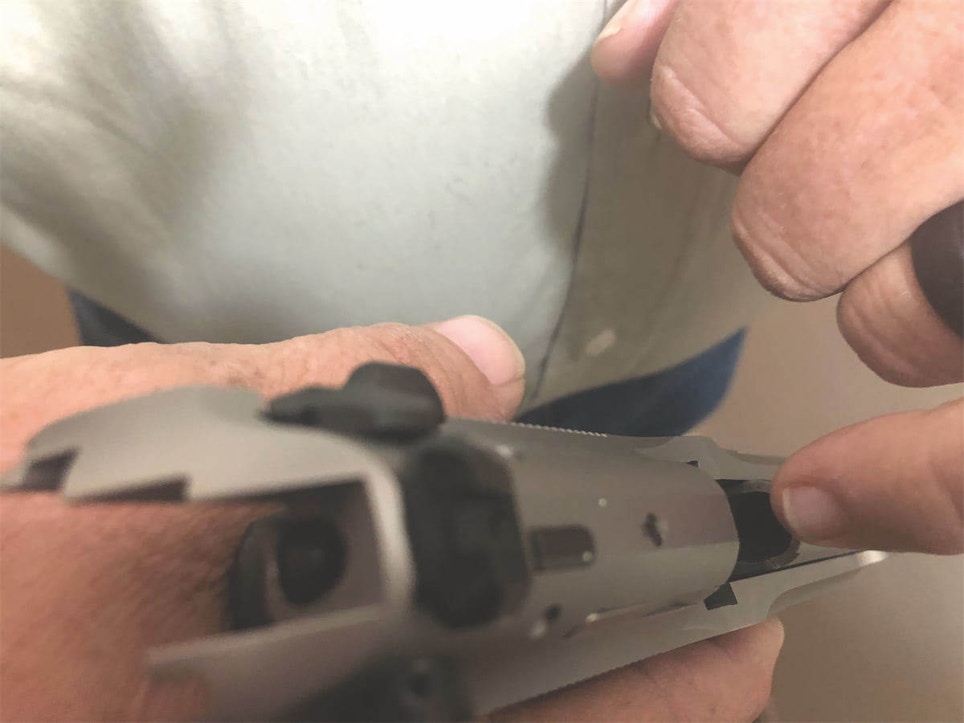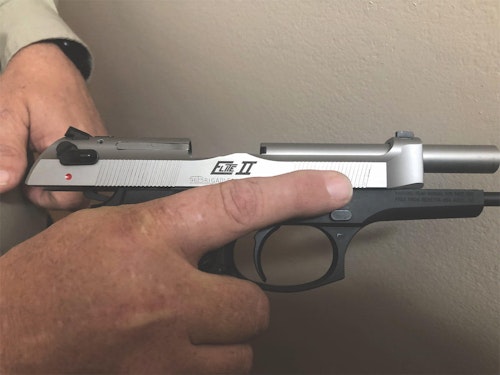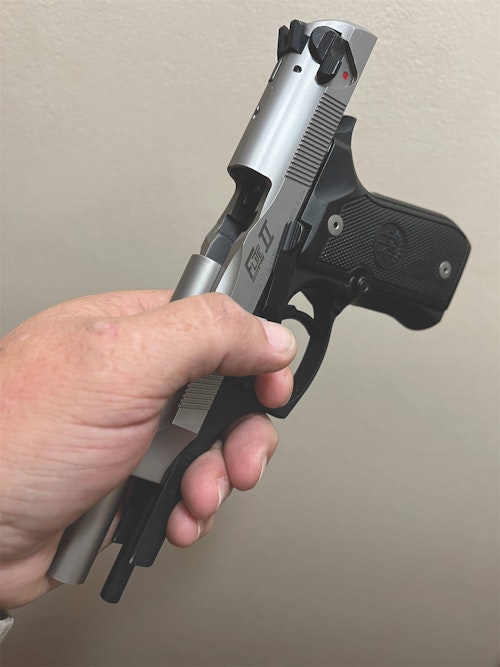We all know the four fundamental safety rules:
1. Treat all firearms as if they are loaded.
2. Keep the muzzle pointed in a safe direction
3. Keep your finger off the trigger until ready to shoot
4. Know your target and what’s beyond it.
This, or a similar version, has been drilled into our heads since we started shooting. Yet, I can’t tell you how many times I’ve visited a gun store and watched customers point firearms at other customers, rest their finger on the trigger, or fail to ensure the gun is clear before handling it. In most cases the salesperson said nothing about it and the behavior went uncorrected. Here’s what you can do to make your shop safer for everyone.
The first step is to make the commitment to safety — safety first, and safety always. This isn’t a half-hearted task and it is not one for the weak-minded person. But the gun industry doesn’t usually attract weak-minded people. I’m confident you’ll have the courage to have a difficult conversation in the name of safety. I’m also certain that most will address the issues in a tactful way that appears educational rather than confrontational. That’s what it takes to make this change.
Establish the Safe Direction
Establishing a safe direction is pretty easy and can be done in ways that will lead customers naturally to the desired behavior. Everyone who looks at a firearm to purchase will automatically hold it and practice their sight picture so they can determine if the gun “fits” them. A safe direction for them to aim can be as simple as hanging a variety of targets on the walls near the ceiling. Hang some wildlife targets for the hunters. Hand some Barney the dinosaur targets for those of us who were forced to endure that mess when our kids were growing up. And, hang some silhouette and hostage scenario targets for those purchasing for self-defense.
Give each group targets for aiming based on their wants, and they will naturally gravitate towards them as targets. If they are aiming at these, your other customers will be safer and less worried while shopping.
Demonstrate and Explain
Everyone has their own learning style, so you have to hit all of them. If you verbalize everything you do when handing a gun to a customer, you will have set them up for success (and safety). Let’s walk through a scenario to explain what I mean:
As you pull the customer’s selection from the gun case, you start to explain …
“This is Smith & Wesson’s response to the Glock pistols, which had taken a lot of the police market from Smith. Had they come out with this gun earlier, Glock would not be the major player that it is today. First, let’s make sure there isn’t any ammo around. I will then remove the magazine by pressing the mag release button.”
Show the button being pressed and the magazine being ejected. “I’ll lay the magazine here on the counter so I can check to ensure the gun is clear, while always keeping the gun pointed in a safe direction. Notice that I always treat guns as if they are loaded. Mistakes about this can be deadly. I have lost a few close friends who shot themselves with an ‘unloaded’ gun. I will push up on the slide lock as I pull the slide to the rear. That will lock the action open and make the visual and physical check easy to do. I’m checking the barrel and magazine visually and with the tip of my little finger to ensure there are no cartridges present. Now, I will do it a second time to be sure.”
Physically show them how to do it and emphasize its importance. “Now, I’m going to pull the slide to the rear and release it. Then I will re-insert the magazine so that you can demonstrate the same checks as I hand it to you. I do this every time I pick up a gun and have taught all of my students (or customers) to do the same. Better safe than sorry.”
Once you put the mag back in with the slide forward, you can then grip the gun properly and aim it up at one of the targets on the wall. “The targets on the wall provide a perfect place to aim without pointing the muzzle at anyone. They allow you to safely pull the trigger if you want to test it. Otherwise, safety dictates that the finger is always off the trigger until you’re ready to actually shoot. The recommended placement for the finger on most semi-autos is fully extended and resting where the slide meets the frame. You then return the gun in front of you while keeping the muzzle pointed up or down.
“Now, I will lock the slide to the rear so that the action is open.”
After doing that, you can turn the gun around so that the muzzle is facing down and the grip naturally facing the customer. Your hand will be around the slide/barrel using it as a grip to pass it off. “OK, it’s your turn. Please show me that you can safely handle the gun just as I did.”
Some customers will repeat the steps one by one to demonstrate they are familiar with the handling of the gun. The’ll understand what you just did and will want to impress you by doing the same. You should have no issues with them from that point on, because you’ve both told them and shown them the safety expectations of your shop.
The inexperienced customer will gain the same knowledge as the first group but may have trouble going through all the steps. It will be up to you to assist them. In fact, it’s critical that you assist them. You might be the only safety instruction they receive. The only gun rule I didn’t mention was knowing the target and what’s beyond it. I would discuss that one later as we talk about caliber choice and the intended use of the gun.
The key to success is to come up with a way to do all of these things so that they appear natural rather than forced. I can foresee some people objecting to this process as cumbersome and time consuming, but I disagree. Learning to say things and demonstrate the behaviors correctly might take some time, but it takes no more time to explain as you’re performing these actions than it does to do them without explanation. Trust me. It’s something that I’ve been doing as an instructor for years. But even if it is going to take a little more time, the benefits far outweigh the additional minute you spend.








